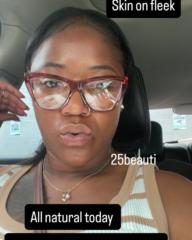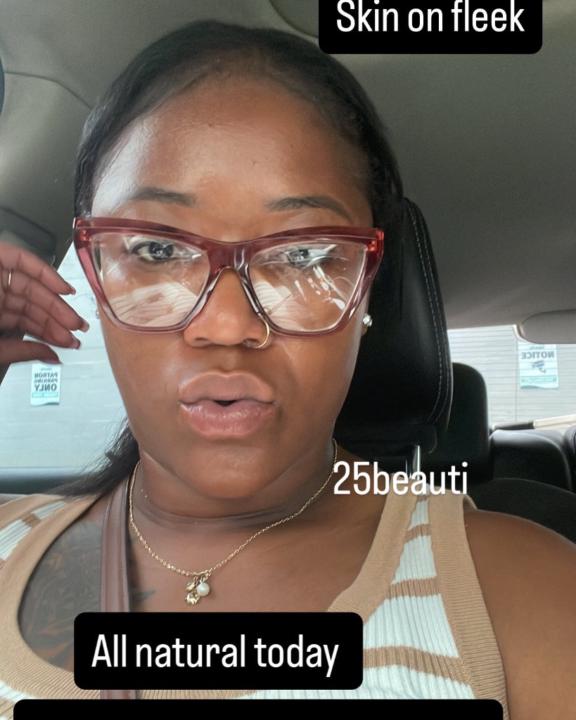Activity
Mon
Wed
Fri
Sun
Nov
Dec
Jan
Feb
Mar
Apr
May
Jun
Jul
Aug
Sep
Oct
What is this?
Less
More
Owned by Danisha
The Future of Beauty Education! Hey there, beauty enthusiasts! I'm a cosmetology student on the journey to becoming a licensed cosmetology instructor.
Memberships
Stylist Success (Free)
312 members • Free
Skoolers
175.6k members • Free
13 contributions to 25beauti professionals
Early bird gets the worm
1. “What beginner mistakes should I avoid when starting out in cosmetology?” ✅ Why ask this? Learn from others' experience to skip common pitfalls and speed up your progress. 2. “Which tools or products are absolutely worth investing in early on?” ✅ Why ask this? Save money and time by getting real-world recommendations from working pros. 3. “How did you land your first clients or salon job after school?” ✅ Why ask this? Get practical tips for breaking into the industry and building your career fast. 4. “What’s one skill you wish you focused on more in school?” ✅ Why ask this? It highlights high-value techniques or trends you might not be paying enough attention to. 5. “How do you stay creative and avoid burnout in this field?” ✅ Why ask this? Cosmetology is an art — this helps you think long-term and avoid mental fatigue.
1
0
Tools for a cosmetologists or beauty professional
Here’s a comprehensive list of cosmetology tools for hair — used by hairstylists for cutting, styling, coloring, and treating hair: ✂️ Cutting Tools - Shears (Haircutting scissors) - Texturizing shears / Thinning shears - Razor (straight or guarded) - Clippers - Trimmers / Edgers - Sectioning clips 💇 Combs & Brushes - Cutting comb (fine and wide tooth) - Tail comb (rat-tail comb) – for sectioning - Wide-tooth comb – for detangling - Paddle brush – for smoothing - Round brush – for blowouts and volume - Vent brush – for faster drying - Teasing brush/comb – for backcombing - Detangling brush 💨 Styling Tools - Blow dryer (with diffusers and concentrator attachments) - Flat iron / Hair straightener - Curling iron / Curling wand - Hot rollers - Crimping iron - Hair steamer 🎨 Coloring Tools - Color brushes - Color bowls - Foils - Balayage board - Applicator bottles - Gloves - Cape - Timer - Color whisk 🧴 Hair Treatment & Product Application Tools - Spray bottles (water or product) - Scalp brush - Applicator bottles (for treatments) - Mixing bowl & spatula - Measuring tools (for color or treatment mixing) 🛠️ Other Essentials - Cape / Salon gown - Neck strips - Towels - Sanitizing jar (for combs and shears) - Barbicide or disinfectant - Mannequin head (for practice) - Tripod or stand - Apron - Hair clips (duckbill, alligator, butterfly clips)
1
0
Answers to the questions
1. How has the cosmetology industry evolved since you started, and how do you stay updated with trends and techniques?The cosmetology industry has transformed dramatically over the years. When I started, the focus was mainly on traditional services—basic haircuts, coloring, and makeup. Now, the industry has embraced advanced techniques, diversity in beauty standards, and the power of social media. Clients are more educated and trend-conscious, which pushes professionals to stay sharp. To keep up, I regularly attend trade shows, take continuing education courses, follow leading industry professionals on platforms like Instagram and TikTok, and subscribe to beauty magazines and online learning platforms. I also test new products and techniques in low-risk settings before introducing them to clients. 2. What’s been the most challenging aspect of working in the beauty industry, and how have you overcome it?One of the most challenging aspects has been dealing with self-doubt and comparison, especially in a field that's so visual and client-driven. With social media showcasing perfection, it's easy to feel like you’re not doing enough. I’ve overcome this by focusing on growth over perfection. I keep a portfolio to track progress and remind myself of my journey. I also prioritize client satisfaction over likes or follows. Building authentic relationships with clients and staying passionate about learning helps keep me grounded and motivated. 3. Can you walk us through your process for creating a customized look for a client?Absolutely. Customization begins with a consultation. I ask the client about their lifestyle, preferences, hair/skin condition, and maintenance goals. I also assess their face shape, skin tone, and natural features. Next, I suggest a few ideas and explain what would work best and why. Once we agree, I carefully plan each step—whether it’s selecting the right hair color formula, choosing makeup shades, or determining the ideal haircut. After the service, I educate the client on maintenance and product recommendations to help them maintain the look at home.
0 likes • 3d
@Michelle Berryman here are some steps to help you get started. ✅ Step 1: Define Your Niche and Purpose Skincare is a broad topic. Narrow down what your page will focus on: Examples: - Skincare tips for oily/acne-prone skin - Product reviews - Affordable skincare routines - Ingredient education (e.g., benefits of niacinamide, retinol, etc.) - Before-and-after transformations - Natural/home skincare remedies Ask yourself: - Who is your audience? - What problem are you solving? - What tone do you want to use (educational, friendly, luxury, minimal, clinical)? ✅ Step 2: Create Your Instagram Account If you haven’t already: 1. Download Instagram & create a business or creator account (for analytics). 2. Choose a memorable handle (e.g., @GlowWithSam, @SkinSimplicity, @SkincareDecoded). 3. Add a profile picture – a clear photo of yourself or a logo. 4. Write a bio that explains your page in a few words (e.g., “Skincare tips & reviews | Affordable & effective routines | DM for collabs”). ✅ Step 3: Develop a Content Plan Plan 5–10 types of posts you’ll create. Keep it visual, educational, and engaging. Content ideas: - Routine videos (morning/night) - Product reviews - Ingredient breakdowns - Skincare myths/facts - Before/after progress - Polls and Q&A in stories - Reels with trending audio Use Canva, CapCut, or InShot for design/editing. ✅ Step 4: Design a Visual Aesthetic Choose 2–3 brand colors, 1–2 fonts, and a filter/preset for photo consistency. A cohesive look builds trust and recognition. ✅ Step 5: Post Consistently & Use Hashtags Start by posting 3–5 times per week, including reels, carousels, and stories. Use relevant skincare hashtags like: - #SkincareRoutine - #SkinTips - #GlowingSkin - #SkincareAddict - #SkinCareCommunity Mix broad (popular) and niche hashtags. ✅ Step 6: Engage With Your Audience - Reply to comments and DMs - Follow similar pages - Comment genuinely on others’ posts - Do story polls, Q&As, or “this or that” content
My thoughts for this morning
Good morning practicing a uniform 90 degree cut, a pixie cut and a 45 degree graduated hair cut practice makes perfect. Practice all practical procedures as well as memorizing the science behind hair, nails and skin can increase your confidence and experience in cosmetology.
1
0
Q and A questions early start
1. How has the cosmetology industry evolved since you started, and how do you stay updated with trends and techniques? 2. What’s been the most challenging aspect of working in the beauty industry, and how have you overcome it? 3. Can you walk us through your process for creating a customized look for a client? 4. What business or marketing strategies have helped you grow your clientele or brand? 5. What common mistakes do you see new cosmetologists make, and how can they avoid them?
1
0
1-10 of 13
@danisha-reynolds-4340
I am a cosmetologist student and preparing to take my stateboards. Then once that’s completed I’m going to sign up for the instructor program.
Active 2d ago
Joined Sep 23, 2025
Philadelphia

